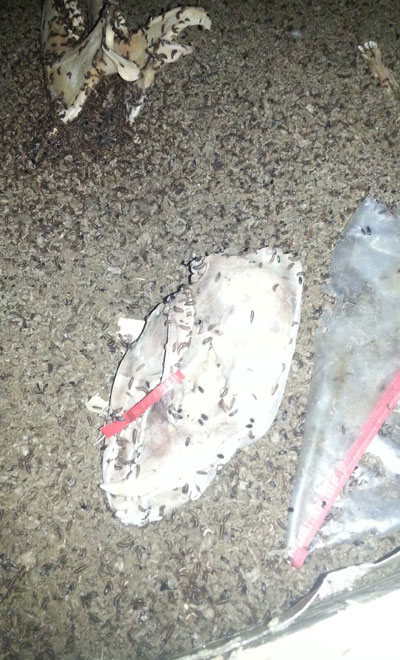
Known as a pest to some, beetles are frequently found in the dark corners of a home, devouring hair, wool, fur, grains, flour and the like. However, Dermestid beetles also consume the flesh of dead animals, which has made them useful to universities and museums in the preparation of skulls and other bones for display.
In the past, skulls and/or other bones required boiling, and the boiling of skulls is messy business, sometimes damaging delicate bone structures such as nasal membranes, loosening suture lines and after all that, also imparting an oily film to the bone, leaving it yellow. Boiling can also change the shape of a bone or shrink skulls.
Preparation with flesh-eating beetles avoids these pitfalls. Also known as leather or hide beetles, Dermestids can strip the flesh from dead animal carcasses and skulls, which obviously has its benefits to another industry: Taxidermy.
Taxidermists now utilize Dermestid beetles because they pore over a carcass, eating all the skin, flesh and cartilage in one swarming mass. These beetles do the detail work, gleaning all the organic matter from the nooks, crannies and other crevices of bone for a European mount.
According to a variety of taxidermists, a decent-sized colony of Dermestid beetles can clean a deer, caribou, sheep or goat skull in three to five days. Many avid hunters are now even raising their own colonies of Dermestids, as the beetles can be purchased online and are easy to maintain and multiply by following simple procedures. But whether or not you’re interested in raising your own and doing the detail work for your mount before sending off to the taxidermist for finishing, or you’re leaving it all up to the professional, chances are your European skull mount will today involve the use of Dermestid beetles. No longer just pests, these beetles now play a vital role in the creation of that trophy mount to be displayed on your wall for a lifetime.
